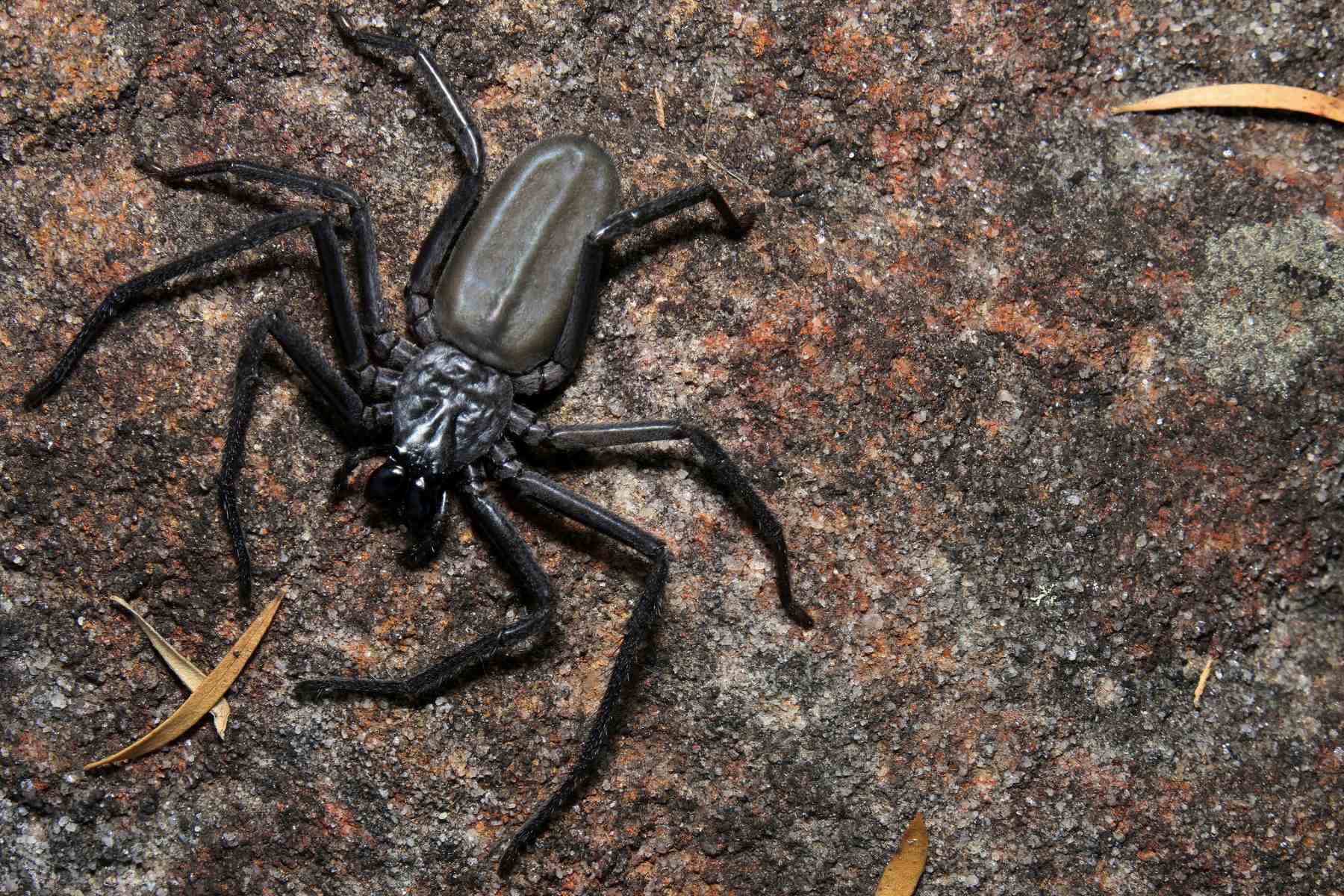
The Flat Rock Spider is an intriguing arachnid that has captivated the attention of scientists and nature enthusiasts alike. This unique species, also known by its scientific name, “Hemicloea caeca,” derives its name from its preferred habitat – flat rock surfaces.
Found predominantly in the rocky outcrops of Australia, this spider has adapted exceptionally well to its environment. With its remarkable camouflage capabilities and specialized hunting strategies, the Flat Rock Spider has managed to become a stealthy predator in its rocky domain.
In this article, we will delve into the world of the Flat Rock Spider and uncover some astonishing facts about this remarkable creature. From its secretive lifestyle to its unusual physical features, we will explore the intriguing aspects of this lesser-known spider species.
Key Takeaways:
- The Flat Rock Spider is a master of disguise, blending seamlessly with its rocky habitat to ambush prey with lightning-fast reflexes. It plays a crucial role in keeping insect populations in check, making it an important part of its ecosystem.
- Conservation efforts are underway to protect the unique habitat of the Flat Rock Spider, ensuring the survival of this fascinating species. Its intriguing behaviors and characteristics make it a captivating subject for scientific research and study.
Unique Adaptations
The Flat Rock Spider, scientifically known as Carparachne aureoflava, possesses unique adaptations that help it thrive in its rocky habitat.
Natural Camouflage
This spider has the remarkable ability to blend seamlessly with its surroundings, thanks to its ability to change its color to match the rocks it inhabits.
Exclusive Habitat
The Flat Rock Spider is endemic to the deserts of South Africa, where it can be found primarily in the rocky outcrops.
Ambush Hunter
This spider relies on its excellent camouflage to patiently wait for unsuspecting prey to come within striking distance.
Speedy Hunter
When hunting, the Flat Rock Spider can move with surprising agility, pouncing on its prey with lightning-fast reflexes.
Diet
The diet of the Flat Rock Spider mainly consists of insects and small arthropods that inhabit its rocky habitat.
Not Dangerous to Humans
Despite its formidable appearance, the Flat Rock Spider is not considered dangerous to humans and rarely poses a threat.
Female Dominance
In the world of Flat Rock Spiders, females hold the power. They are often larger and more aggressive than their male counterparts.
Silk-Lined Burrows
Flat Rock Spiders create silk-lined burrows within the crevices of rocks, providing them with refuge during extreme weather conditions.
Mating Ritual
During the mating season, male Flat Rock Spiders perform intricate courtship dances to attract females.
Egg Sacs
Females lay their eggs inside protective silk sacs, which they guard fiercely until the spiderlings hatch.
Short Lifespan
The Flat Rock Spider has a relatively short lifespan, typically living for only one to two years.
Vulnerable to Habitat Loss
Due to their limited range and specific habitat requirements, Flat Rock Spiders are particularly vulnerable to habitat destruction caused by human activities.
Solitary Creatures
Outside of the mating season, Flat Rock Spiders lead solitary lives, preferring to dwell alone in their rocky hideaways.
Effective Predators
Flat Rock Spiders are highly effective predators, using their venomous bite to immobilize and digest their prey.
Cryptic Behavior
These spiders prefer to remain hidden during daylight hours and become more active during the cooler temperatures of dawn and dusk.
Sensory Abilities
The Flat Rock Spider possesses fine sensory hairs on its legs that allow it to detect even the slightest vibrations, helping it locate prey and avoid potential threats.
Important Ecological Role
By keeping populations of insects and other arthropods in check, the Flat Rock Spider plays a vital role in the ecosystem of its habitat.
Conservation Efforts
Conservation organizations are working to preserve the rocky habitats where Flat Rock Spiders reside, ensuring the survival of this unique species.
Fascinating Research Subject
The intriguing characteristics and behaviors of the Flat Rock Spider make it an excellent subject for scientific research and study.
Conclusion
In conclusion, the Flat Rock Spider is a fascinating creature that possesses unique characteristics and has adapted to its rocky habitats in remarkable ways. From their ability to flatten their bodies and blend into their surroundings to their incredible hunting strategies, these spiders have captivated the imaginations of researchers and nature enthusiasts alike. With their venomous bites and impressive agility, they are truly remarkable predators.
While the Flat Rock Spider may not be widely known, its importance within its ecosystem cannot be understated. As a natural pest controller, it helps maintain insect populations and plays a vital role in maintaining the balance of its habitat. However, like many other species, it faces threats from habitat destruction and climate change. Conservation efforts are crucial to ensuring the survival of this incredible arachnid.
Learning more about the Flat Rock Spider and sharing knowledge about its unique characteristics will not only enhance our understanding of this species but also foster greater appreciation for the intricate web of life that exists in our natural world.
FAQs
Q: Where can Flat Rock Spiders be found?
A: Flat Rock Spiders are native to rocky areas in Australia, particularly in the southeast region.
Q: How do Flat Rock Spiders camouflage themselves?
A: These spiders have the ability to flatten their bodies, allowing them to blend seamlessly into the crevices and cracks of their rocky habitats.
Q: Are Flat Rock Spiders dangerous to humans?
A: While Flat Rock Spiders do possess venomous bites, they are not considered dangerous to humans. Their venom is primarily used for hunting prey and is usually not potent enough to cause severe harm to humans.
Q: What do Flat Rock Spiders eat?
A: These spiders primarily feed on small insects and invertebrates such as ants, beetles, and other spiders.
Q: Are Flat Rock Spiders endangered?
A: Currently, the conservation status of Flat Rock Spiders is not assessed. However, due to their localized habitat requirements, they may face threats from habitat destruction and climate change.
Q: How do Flat Rock Spiders catch their prey?
A: Flat Rock Spiders are skilled hunters. They use their speed and agility to chase down their prey, deliver a venomous bite, and then immobilize it before consuming it.
Was this page helpful?
Our commitment to delivering trustworthy and engaging content is at the heart of what we do. Each fact on our site is contributed by real users like you, bringing a wealth of diverse insights and information. To ensure the highest standards of accuracy and reliability, our dedicated editors meticulously review each submission. This process guarantees that the facts we share are not only fascinating but also credible. Trust in our commitment to quality and authenticity as you explore and learn with us.


